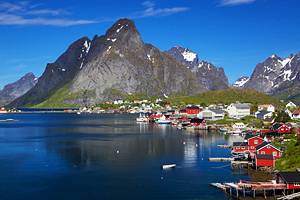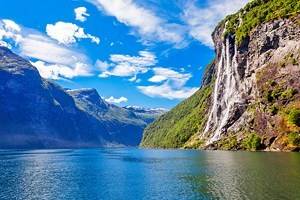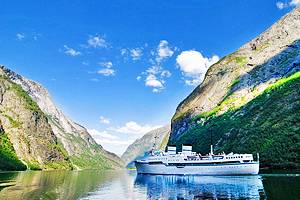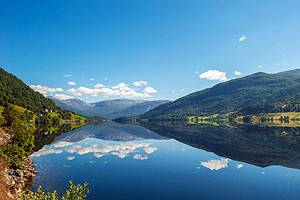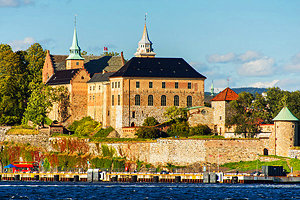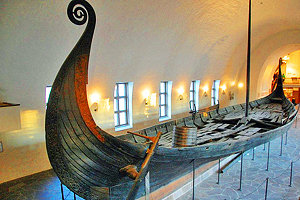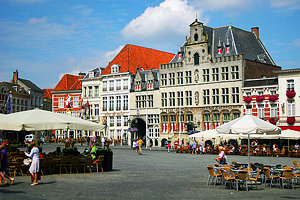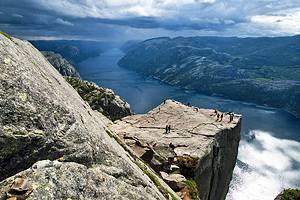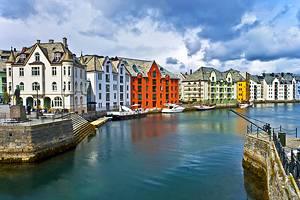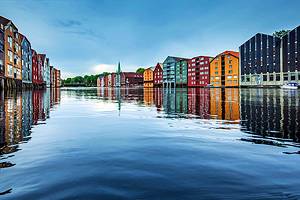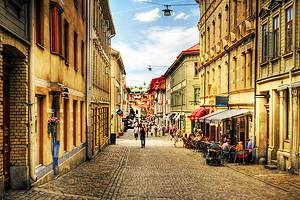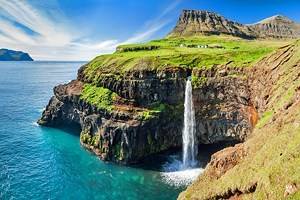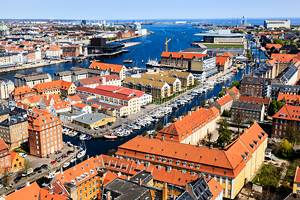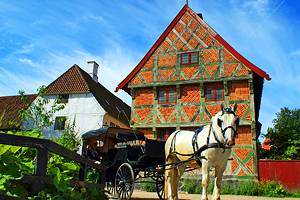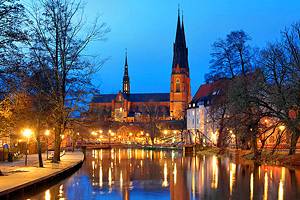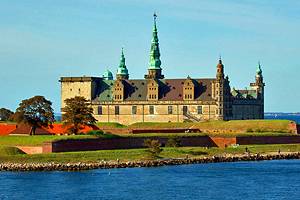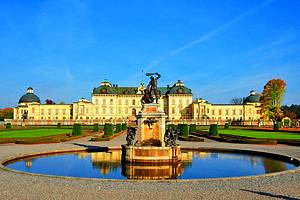Tourist Attractions in Norway
Norway offers visitors an incredible mix of cultural and natural wonders to explore. From the country's cosmopolitan capital city of Oslo to its endless snowcapped mountain peaks and deep fjords, there's no end of choices for travelers in the land of the midnight sun and stunning northern lights.
Despite its numerous mountains and rugged coastline, getting around the country is surprisingly easy. In fact, the country's top-notch public transit system offers some of the best sightseeing opportunities, too, whether you're traveling by rail or aboard the fantastic coastal steamers.
One of the world's most prosperous nations, Norway seems to have a fascinating museum for just about every important aspect of its rich cultural and social history. Do your research, and you'll find fascinating attractions covering everything from the Vikings to seafaring and fishing, as well as art and entertainment.
Norway is also rich in spectacular scenery. From its stunning fjords to its spectacular mountains and glaciers, many of which are easily accessible to tourists, you'll find some of the best places to visit in Europe for exciting outdoor adventures and activities.
Sognefjord: Norway's Largest Fjord
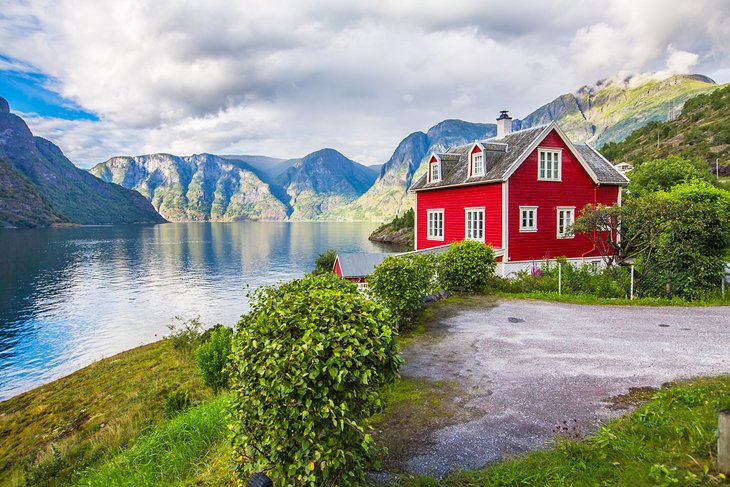
The largest of Norway's more than 1,700 named fjords, Sognefjord reaches 204 kilometers inland from the coastal village of Skjolden and branches off into countless smaller inlets and fjords along the way. At its widest, the King of the Fjords, as it's known by Norwegians, is almost five kilometers across, and the cliff walls reach as high as 1,307 meters, making a breathtaking sight.
The most popular way to visit the fjord is by boat. Fjord cruises and sightseeing tours are therefore plentiful, with many of the best tour options departing conveniently from the attractive town of Bergen. But wherever you choose to embark, be sure to allow a full day for your adventure.
Tourists will also enjoy exploring the narrower branches like Naeroyfjord. This breathtakingly beautiful 17-kilometer stretch features cliff walls that are only 250 meters apart and tower more than 1,700 meters above the water.
Another top destination in the Sognefjord area is Fjærland. This stunningly beautiful region is home to Europe's biggest glacier, Jostedalsbreen, and the Norwegian Glacier Museum (Norsk Bremuseum). In addition to its excellent exhibits relating to the Jostedalsbreen glacier, the museum also focuses on the impact of climate change in the region.
Pulpit Rock (Preikestolen)
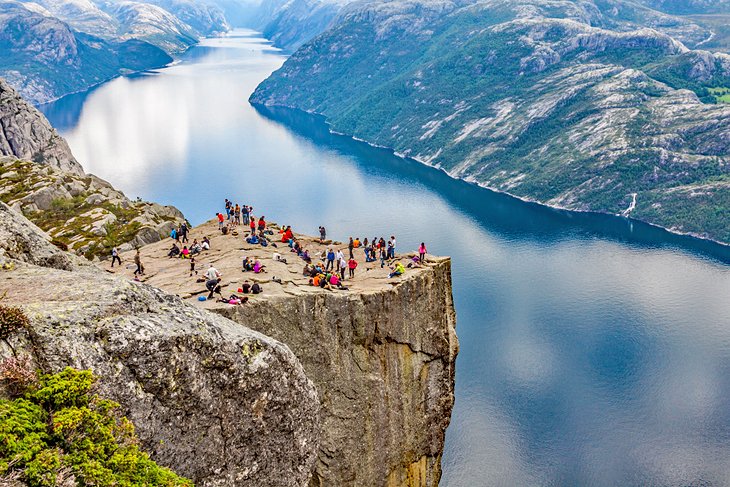
A tourist attraction best suited for the active traveler, thanks to the arduous journey required to get here, Pulpit Rock (Preikestolen) is nevertheless one of the most popular tourist sights in Norway. It's also one of the most photographed sites in Norway.
Located near Stavanger, the destination requires ferry and bus rides followed by a two-hour uphill hike. But once you reach the almost perfectly flat-topped cliff, situated more than 600 meters above the water, you'll be rewarded with incredible views over Lysefjord.
Those visiting the Stavanger area will also want to stop by IDDIS, which houses the surprisingly fascinating Norwegian Canning Museum. Set within an authentic historic cannery, the fun museum portrays one of the country's most important industries—sardine fishing and preparation—and is now combined with the Norwegian Printing Museum under one roof.
Stavanger Cathedral is also a top tourist attraction in Stavanger. After a multi-year period of extensive restoration, this magnificent landmark has fully reopened to the public. This 12th-century structure features multiple styles, including a Romanesque basilica, a Baroque pulpit, and a Gothic font.
Location: Rogaland, Norway
Norway's Arctic City: Tromsø
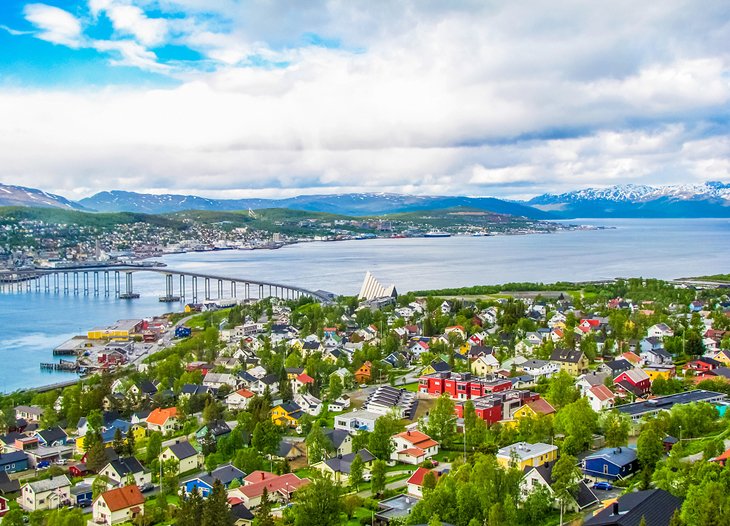
Situated 349 kilometers north of the Arctic Circle, Tromsø is best known for its important role as the base for many major Arctic expeditions since the mid-1800s. The Tromsø area was first settled in the 13th century as a fishing village, and the industry has been an integral part of life here ever since, contributing to the area's maritime charm.
Also, a result of its northerly position, Tromsø is one of the top destinations in the world for seeing the spectacular northern lights. Tourists will find multiple attractions that explain and explore the phenomenon.
Tromsø is home to several fantastic museums, two of which are dedicated to studying life in the far north. Polaria is the newest of these, and is home to exhibits about the aurora borealis (northern lights), the effects of climate change on Arctic ecosystems, and Arctic wildlife, including an Arctic aquarium.
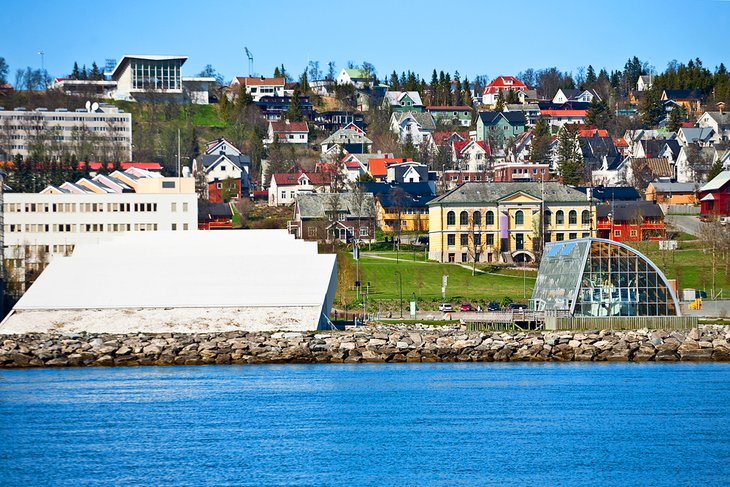
The Polar Museum focuses on the area's long history as a fishing community and its more recent status as a primary research base for polar studies. Exhibits include the findings of more recent expeditions and scientific studies, which delve into the world of the dark and cold deep sea of the Arctic.
An unexpected tourist attraction for an area deep within the frozen north, the Tromsø Arctic-Alpine Botanic Garden is home to a plethora of flowering plants. Highlights include hardy rhododendrons and the gigantic Tibetan blue poppy, as well as a garden dedicated to the region's traditional medicinal plants.
Read More:
Take a Trip to the Lofoten Islands
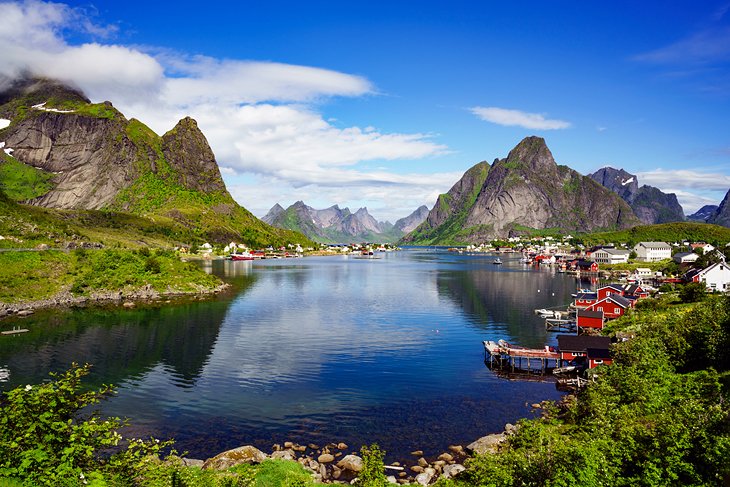
The magnificent Lofoten Islands form an archipelago off the coast of northwestern Norway and are a popular tourist destination for Norwegians and foreigners alike. Thanks to the Gulf Stream, the weather here is mild despite its location in the Arctic Circle.
Tourists come here to enjoy the beaches, explore traditional fishing villages, as well as to kayak and hike. Many also come here to see the wildlife, a diverse array of characters, including everything from eagles to moose, as well as whales. The islands are also one of the best places to visit for a glimpse of the northern lights.
There are plenty of other attractions and things to do on the islands, especially in Svolvaer. The Lofoten Islands' largest town, Svolvaer, is located on the southern coast of Austvågøy island and is easily accessible by ferry from the mainland. Here, you'll find the Lofoten War Memorial Museum (Lofoten Krigsminnemuseum), with its collection of World War II artifacts, and the unique Magic Ice Lofoten, which displays ice sculptures depicting local life.
The Lofoten Museum, which explores the history of the island's fishing industry, is also located on Austvågøy. Also worth seeing here is the Lofoten Aquarium (Lofotakvariet), which features Arctic sea life.
Tourists can learn even more about the importance of fishing at the Norwegian Fishing Village Museum and the Lofoten Stockfish Museum, which are both located in the village of Å.
Bygdoy Peninsula, Oslo
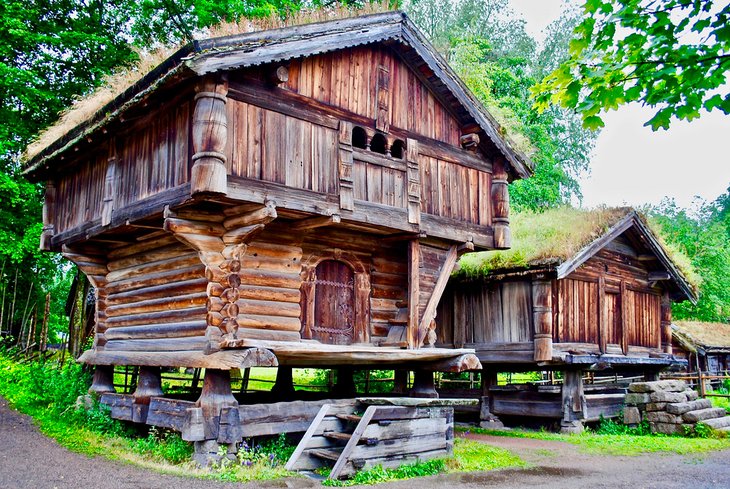
Oslo's Bygdoy Peninsula is a suburb located only four miles west of the city and is easily reached by car or public transportation. It is home to several of Oslo's top tourist attractions and is also known for its many natural spaces, including beaches, parks, and forests.
Among its numerous museums, the Bygdoy Peninsula is home to the Center for Studies of Holocaust and Religious Minorities in Norway, located in Villa Grande. Another top museum is the Fram Museum, which houses the ships Fram, known for its Polar voyages, and Gjøa, the latter famous for being the first ship to navigate the Northwest Passage. The popular Kon-Tiki Museum is just next door.
This area is also home to the Norwegian Maritime Museum (Norsk Maritimt Museum). One of the top places to visit in Oslo for ship and history buffs, the museum explores the role of fishing and other maritime activities in Norwegian life.
Address: Bygdøynesveien 37, 0286 Oslo, Norway
Official site: https://marmuseum.no/en
Bryggen Hanseatic Wharf, Bergen
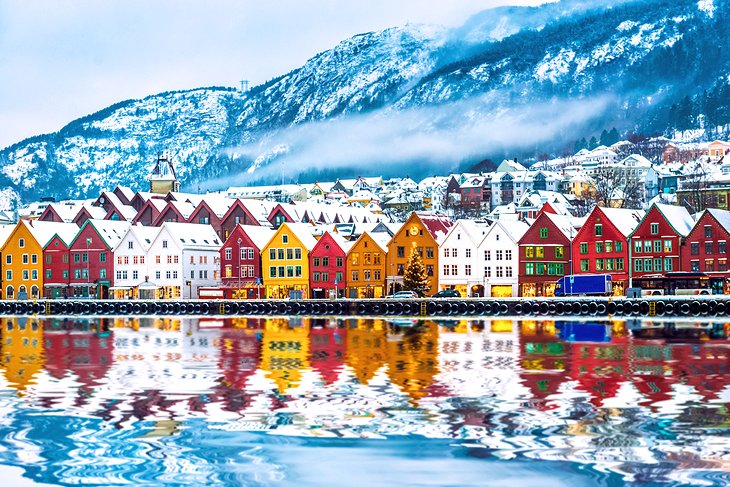
One of the most popular sightseeing opportunities in Bergen is the Bryggen Hanseatic Wharf. This vibrantly painted area was once the city's center of trade and was dominated by Hanseatic merchants. Today, it is a UNESCO World Heritage Site, where tourists can see several historic buildings that portray life during the Middle Ages, as well as boutiques, restaurants, and the Bryggen Museum.
Its iconic row of colourful, leaning wooden houses lines the harbour, evoking a past when Hanseatic League merchants frequented this very spot. You can discover charming artisan studios, unique boutiques, galleries, and inviting restaurants tucked into the historic structures.
You can also visit the meticulously preserved Schøtstuene, the Hanseatic assembly rooms, which currently house the exhibits for the Hanseatic Museum while its main building undergoes extensive restoration.
While in Bergen, visitors will also want to visit Troldhaugen, the former home and workspace of composer Edvard Grieg, as well as the Open Air Market.
Location: Bryggen, 5003 Bergen, Norway
Official site: https://stiftelsenbryggen.no
Northern Lights

While the northern lights can be seen throughout the north, Norway is without a doubt one of the best places to view them. Its extensive stretch of coast that reaches into the Arctic offers perfect conditions for viewing the night sky. Long nights in winter and little to no light pollution (depending on where you are watching from) mean you are incredibly likely to see the northern lights and enjoy them in their true glory. Milder winter temperatures than places like Canada's north also make it a much more pleasant experience.
Norway also offers some exceptional experiences to help you plan a vacation around seeing the northern lights (aurora borealis). Hurtigruten offers northern lights cruises of varying lengths, up the coast of Norway above the Arctic Circle to experience the phenomenon from sea. These run from late fall until early spring, when you are almost guaranteed to see the lights. If you don't, they will offer you another six or seven-day trip for free.
In many cities, like Tromso, you can also arrange an organized tour. These can include everything from private tours and minibus excursions to dogsledding or boat trips to see the northern lights.
Vigeland Sculpture Park, Oslo
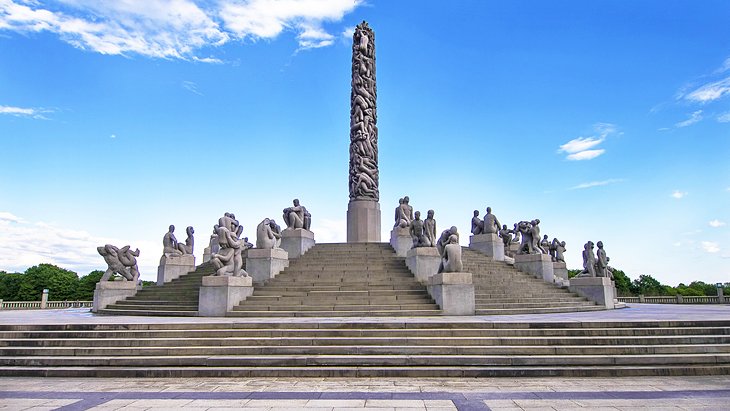
The Vigeland Sculpture Park is one of Oslo's top tourist attractions and is home to over 200 sculptures created by Gustav Vigeland. These sculptures, which are formed out of wrought iron, bronze, and granite, are arranged in five themed groups.
The most famous of these are in the fountain group, which depicts the cycle of human life, culminating in a 16-meter monolith. This collection is found within the large Frogner Park, which also houses the Vigeland Museum and the Oslo City Museum. Also located here are numerous recreational facilities, including Norway's largest playground and an expansive rose garden.
Address: Nobel's Gate 32, 0268 Oslo, Norway
Official site: https://vigeland.museum.no/en
Akershus Fortress, Oslo
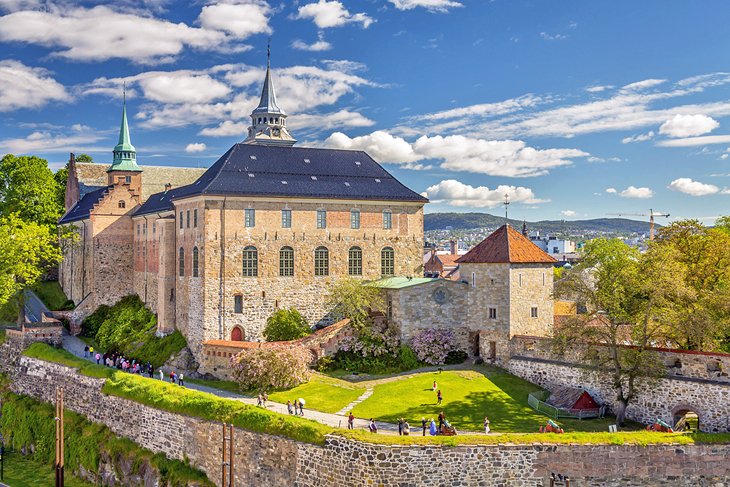
The Akershus Fortress (Akershus Festning) is a medieval castle commissioned by King Håkon V in 1299. It was later turned into a Renaissance royal residence by King Christian IV in the early 17th century.
It sits on a promontory overlooking the Oslofjord, and the grounds have spectacular views over the harbor. Guided tours are available during the summer, and you can also find the Museum of the Norwegian Resistance (Norges Hjemmefrontmuseum) ) on the castle grounds.
History buffs may also want to check out the Norwegian Armed Forces Museum (Forsvarsmuseet). This excellent museum displays weapons and exhibits illustrating Norway's military history. The fortress grounds also provide a lovely backdrop for events, including public ceremonies, concerts, and shows.
Address: 0150 Oslo, Norway
The Olympic Town of Lillehammer
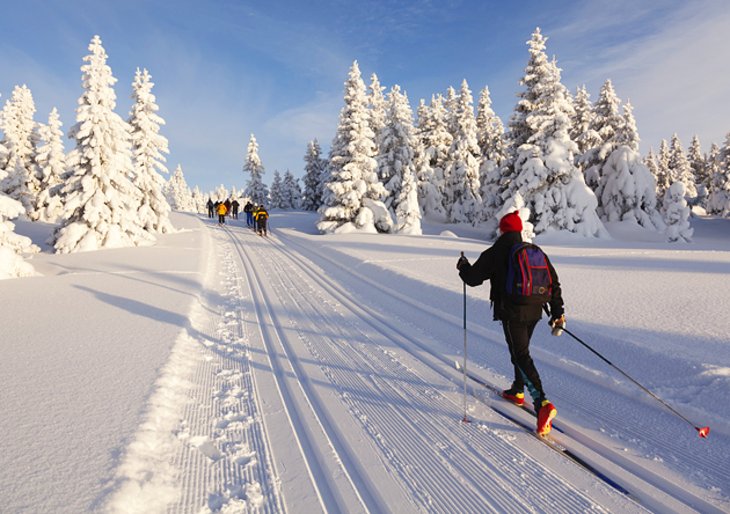
Located above Lake Mjøsa at the south end of the Gudbrandsdal valley, Lillehammer is one of Norway's best-known year-round tourist destinations. In summer, it's all about attractions such as Maihaugen, an open-air museum consisting of more than 100 historic buildings, including 18th-century farmhouses, workshops, and a stave church.
Another notable landmark is Peer Gynt's Cottage. Dating from the early 1700s, it's said to have been the home of the prototype of Ibsen's famed hero.
But it's when the snow flies that Lillehammer really shines. Host to the 1994 Winter Olympics, the city's list of winter activities is endless: skating, curling, sleigh rides, more than 480 kilometers of Nordic ski trails, as well as alpine ski centers.
Official site: http://en.lillehammer.com
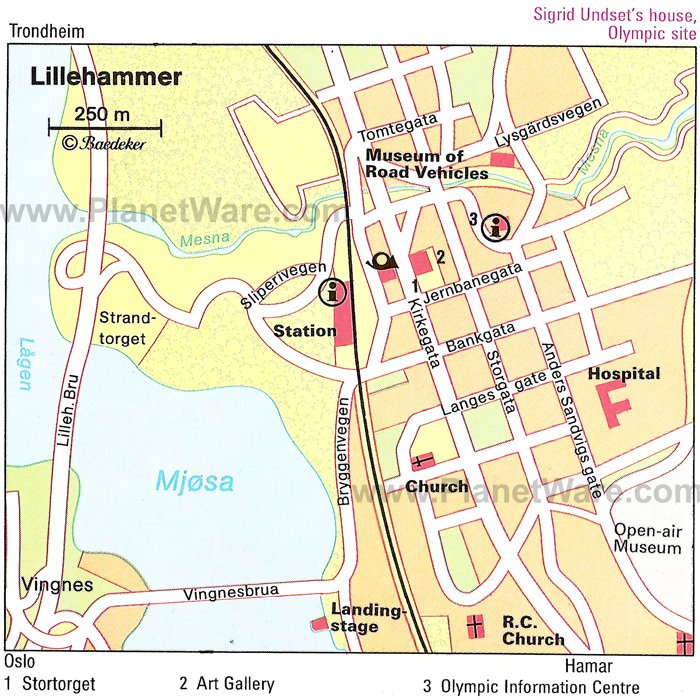
Geirangerfjord
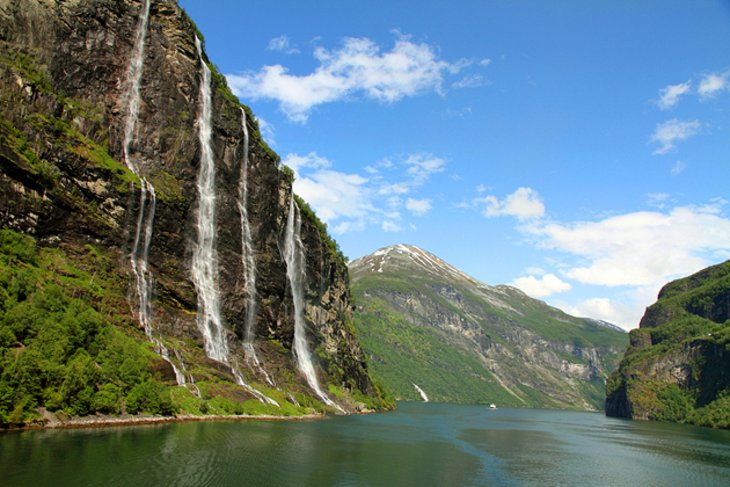
Part of the spectacular Fjord Norway network and regularly topping the UNESCO World Heritage Sites list, the Geirangerfjord region north of Ålesund offers some of the finest scenery anywhere in Norway.
The eastward continuation of the Sunnylvsfjord, the Geirangerfjord, boasts some of the country's most spectacular views. One of the best is from the summit of Dalsnibba.
At 1,495 meters, the views of the surrounding mountains and the Geirangerfjord far below are simply breathtaking. Numerous cruises and tours are available, but if you're driving, be sure to take the winding Eagles' Road with its 11 hairpin bends and great views.
Scenic Rail Routes
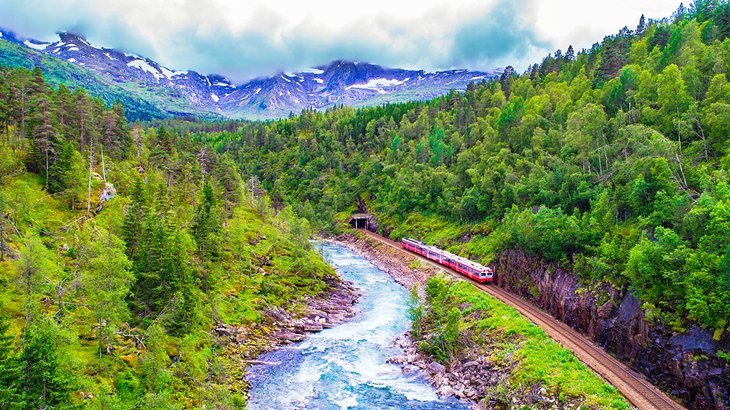
There's no better way to see Norway's stunning countryside than by train. Perhaps surprisingly for such a mountainous country, Norway's rail lines stretch more than 3,218 kilometers, encountering along the way some 775 tunnels and more than 3,000 bridges.
The best scenic routes begin in Oslo, including the Bergen Railway, which runs over the Hardangervidda mountain plateau. Other routes of note are the Dovre Railway from Oslo to Trondheim with its sideline, the Rauma Railway, between Dombås and Åndalsnes, and the famous Flåm Railway, the world's steepest.
Norway's rail network also offers a number of other interesting diversions, such as classic steam trains, gourmet train excursions, and pedal-powered rail tricycles (draisines) for use on abandoned rail lines.
- Read More: Tourist Attractions in Oslo
Drive the Atlantic Ocean Road
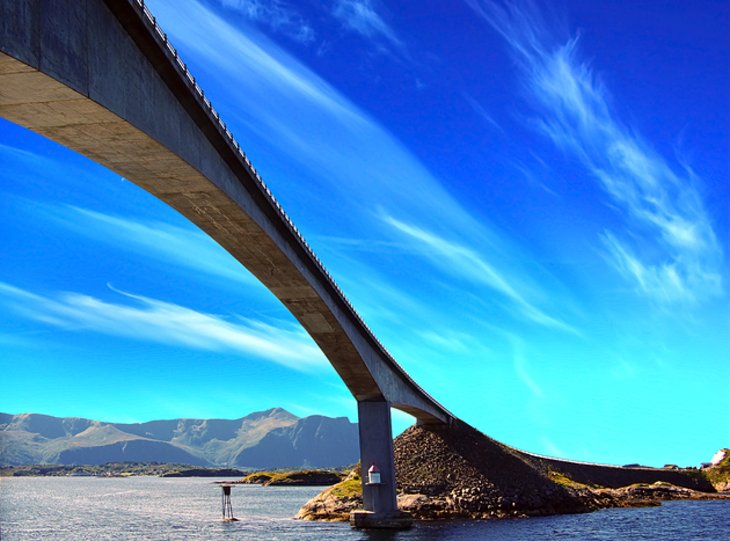
The Atlantic Ocean Road (Atlanterhavsvegen) is one of 18 National Tourist Routes in Norway. Not only is it a vital connection for the maze of tiny islands it serves, it's also a lure for anglers, diving enthusiasts, and visitors wanting to get as close as possible to the sea.
Although just over eight kilometers long, it has gained a reputation as one of the most spectacular stretches of coastal highway in the world, weaving through an archipelago in Eide and Averøy in More og Rømsdal. In addition to the excellent views, which are always spectacular, whatever the weather, you'll have the chance to visit lovely little fishing villages, quaint wooden churches, and the famous Trolls' Church Cave.
Several sites specifically geared to tourists have also popped up, including restaurants and resorts. A number of fishing excursion operators have also set up businesses here.
Official site: www.nasjonaleturistveger.no/en
Jotunheimen
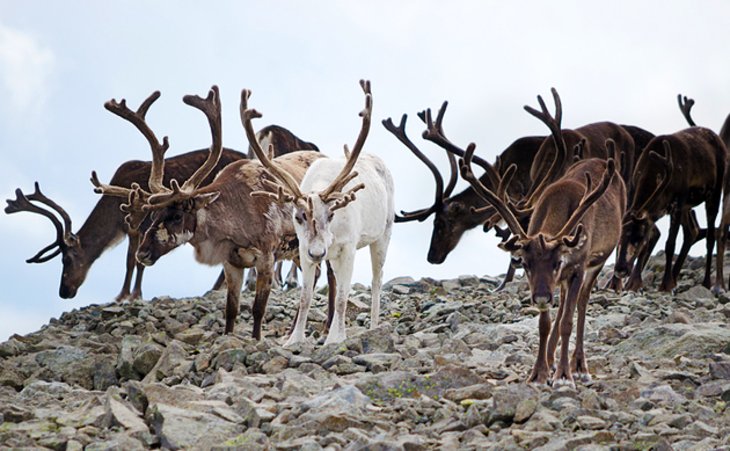
The largest Alpine region on the Norwegian high plateau, the Jotunheimen, covers an area of 3,499 square kilometers and includes Scandinavia's highest mountains. It's also home to many spectacular waterfalls, rivers, lakes, glaciers, and wildlife, such as large reindeer populations.
Two of this national park's mountains rise to heights of more than 2,438 meters, the highest being Galdhøpiggen. Despite its tremendous height, Galdhøpiggen can be climbed in about four hours. Although a guide is required, the incredible views over rocky crags and fields of ice from the summit make it money well spent.
Another four-hour climb in the Hurrungane group is to the 1,349-meter Skagastølsbotn and the Skagastølsbre glacier.
Address: Jotunheimen Reiseliv A, N-2686 LOM, Norway
More Related Articles on PlanetWare.com
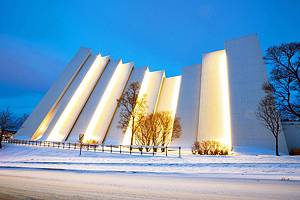
Northern Lights and the Midnight Sun: For those who want to venture north of the Arctic Circle, the reward is a chance to see the legendary aurora borealis and, during the summer, the midnight sun. The northernmost city of Tromsø is perhaps the best place to start, convenient for its frequent ferries, although a trip to the Lofoten Islands is a great option for nature-lovers.
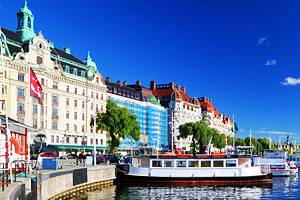
Norway's Swedish Neighbors: Sweden, which borders Norway to the east, has many cities worth visiting, most notably historic Stockholm. Nearby Uppsala is known for its university and a lovely 13th-century cathedral. There are many other popular places to visit in Sweden, including Malmö, which connects to Denmark via the Oresund Bridge, as well as the upscale vacation island of Gotland, often referred to as the "Long Island of the Baltic."


